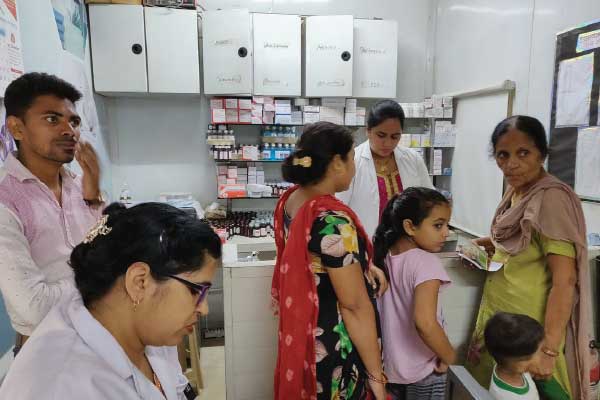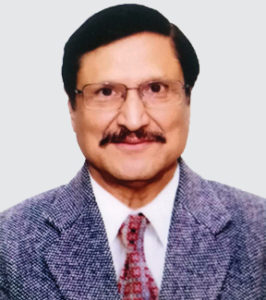
 With four-tier system including Mohalla clinics and many other health schemes, the Government of NCT of Delhi is taking all possible measures to create accessible, affordable and quality model of health care delivery system in National Capital.
With four-tier system including Mohalla clinics and many other health schemes, the Government of NCT of Delhi is taking all possible measures to create accessible, affordable and quality model of health care delivery system in National Capital.
Delhi is a city that reflects a perfect blend of modern and traditional architecture and one of the fastest growing cities in India. It is also the center of the government’s legislative and judicial systems. Spread over an area of 1,483 sq kilometers, 216 meters above sea level, the city shares its boundary with two states i.e Haryana and Uttar Pradesh.

In 1992, Delhi was declared as a state under the National Capital Territory Act, 1991 and has a complex administrative structure with dual jurisdiction i.e. Union and State Government known as Govt of NCT of Delhi. There are 11 districts, including New Delhi and 33 subdivisions, with 110 census towns and 112 villages. The Delhi metropolitan area has five local municipal corporations- North Delhi Municipal Corporation, South Delhi Municipal Corporation, East Delhi Municipal Corporation, New Delhi Municipal Council and Delhi Cantonment Board (DCB).
As per the 2011 Census, the density of population in Delhi is 11,320 persons per square kilometer (as compared to the national level of 382 persons per square kilometer), highest in all states and union territories during this period. Health being a State subject has become top priority to people living in the national capital. Despite multitude of facilities being offered by different government bodies including the Central Government, Railways ESI, Municipal corporations , New Delhi Municipal Council, Cantonment board having their own dispensaries, and hospitals, besides AIIMS and more than 1000 private hospitals/nursing homes , Govt of NCT of Delhi realised that facilities were still not adequate & accessible to each and every citizen.
In order to provide free healthcare facilities to population in Delhi, it has been decided to have a four tier system i.e Mohalla clinics, polyclinics, secondary care hospitals and tertiary care hospitals considering the facts that some areas of Delhi are still unserved and underserved, whereas, some areas are over served.

At a glance, it could be seen that while considering the concept of Mohalla Clinics Government of NCT of Delhi, Department of Health and Family Welfare had 36 allopathic hospitals (including exclusive institutions for dental care, cancer care, cardiac & neurology care and liver ) , with more than 10,000 beds, over 260 dispensaries, 45 mobile health clinics and 150 ambulances and a medical college. In addition there were facilities in Ayurvedic, Yoga, Unani & Siddha, and Homeopathy (AYUSH) stream. With increasing population, government faced a big challenge to expand the existing repository of facilities every year to meet the demands of inhabitants living in Delhi or coming to Delhi for better care facilities. The best idea to meet the challenge was to provide primary healthcare through Mohalla clinics for a population of approximately 10,000 people so that they need not to travel more than two kilometres to seek medical facilities. Earlier, the availability of a dispensary was planned for a population of 30,000- 50,000.
A geo-spatial analysis of primary health facilities belonging to all agencies combined, revealed that there was an inequitable distribution of facilities with 85 dispensaries serving less than 25,000 population, 121 dispensaries serving about 25,000 – 50,000 population, 122 dispensaries for around 50,000 – 75,000 population and 29 dispensaries serving about 75,000 – 100000, while 19 dispensaries served more than 100000 population.
More than 9 lakh population was still unserved. The Government decided to have an innovative plan to open 1,000 Mohalla clinics involving various government agencies including participation of private people.
It was also decided to add 10,000 more beds by reviewing the ongoing construction of three new hospitals and increasing their beds strength at construction stage and further by way of remodelling / expansion of existing 17 Delhi Government Hospitals.
PRIMARY HEALTH CARE
Presently, primary healthcare services are available through 202 Mohalla Clinics which have been functioning and another 350 are going to be started including double shift within next two months. Similarly, 25 polyclinics have been set up for providing specialised facilities through specialists from Medicine, Paediatric, Eye & ENT, etc in out-patient departments near to the community.
Remodelling of existing 94 dispensaries to set up polyclinics has been sanctioned so that people requiring OPD consultations in various specialties need not to go to hospitals. All Mohalla Clinics and polyclinics have the backup facilities of laboratory services of providing more than 200 tests through outsource mechanism.
DELHI’S RECORD SPEAK VOLUME ABOUT THE GOVERNMENT’S INTENT TO IMPROVE HEALTHCARE DELIVERY SYSTEM
On front of important vital indicators like Infant Mortality Rate 16/1000 live births, Neo-natal Mortality Rate 14, and under Five Mortality Rate 22, Delhi has fare record in comparison to All India levels. Delhi’s total fertility rate (TFR) of 1.5 is among the lowest in India (All India level 2.3) which indicates achievement of the replacement rate.
Through another scheme Delhi Arogya Kosh Delhi Govt provides financial assistance to the extent of Rs 5 lakh to the needy eligible patients for treatment of any illness /disease in Government Hospital. From 2017 the financial assistance has been extended for Ultrasound, Doppler Studies, Mammography, EEG, EMG, TMT & ECHO from private empanelled standalone diagnostic centres.
The facilities of cashless treatment to victims of road accident, acid attack and thermal burn injury are also being offered in private nursing homes and hospitals through Delhi Arogya Kosh (DAK). This is valid for those accidental cases which occur in the National Capital Territory of Delhi and registered as MLC in Delhi. The idea is that no victim should suffer due to denial of healthcare facilities because of financial involvement. The private nursing homes and hospitals having an agreement with the Department of Health and Family Welfare can claim reimbursement on ceiling rates.
Now, the next best practice being considered is to extend this facility to all registered private nursing homes and hospitals in Delhi irrespective of any agreement and they can claim reimbursements on ceiling rates for treatment provided to victims as mentioned above. In the recently introduced Mukhya Mantri Teerath Yojna, the healthcare facilities are being provided to population of Delhi during travel and their stay.
In essence, the Health Department of GNCT Delhi is committed to improve delivery of healthcare scheme, enabling every citizen of Delhi to avail best medical facilities in a cost- effective manner.
(Writer is Dr Ashok Kumar, Director General, Directorate General of Health Services, Government of NCT of Delhi. Views expressed are a personal opinion.)
Be a part of Elets Collaborative Initiatives. Join Us for Upcoming Events and explore business opportunities. Like us on Facebook , connect with us on LinkedIn and follow us on Twitter , Instagram.












